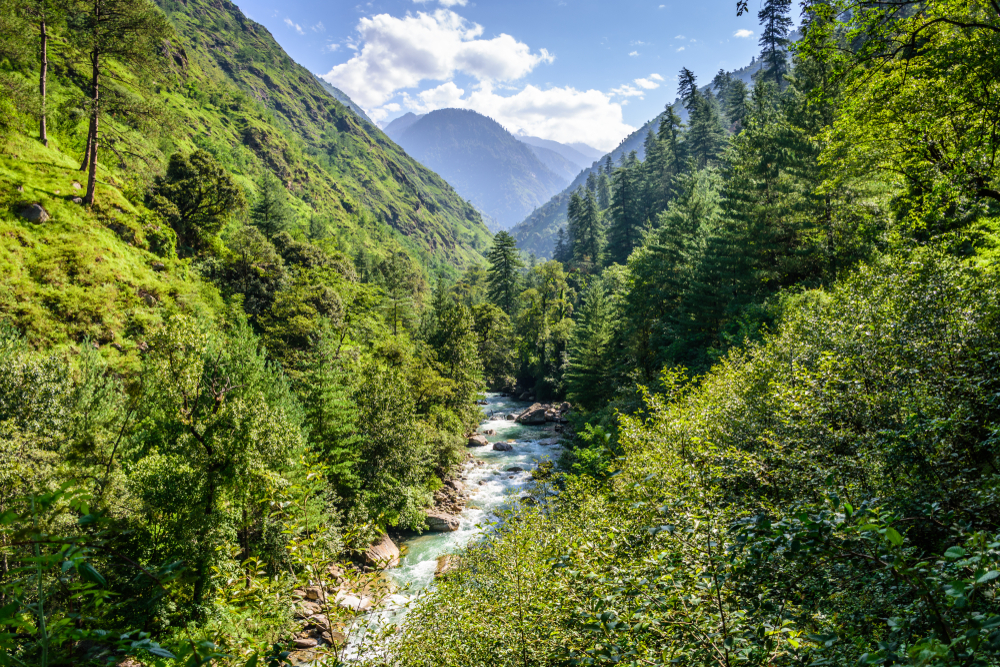Great Himalayan Overview
The Great Himalayan National Park (GHNP), locally known as Vishwa Dharati Udyan, is a UNESCO World Heritage Site located in the Kullu district of Himachal Pradesh, India. Spanning an area of approximately 454 square miles (1,171 square kilometers), this park is nestled in the western Himalayas, between the altitudes of 4,600 feet (1,400 meters) and 20,000 feet (6,000 meters). Its vast expanse encompasses rugged terrains, deep river valleys, lush forests, and snow-covered peaks, including the notable Srikhand Mahadev peak. The Tirthan, Sainj, Jiwa Nal, and Parvati rivers carve their way through the park, enhancing its dramatic landscapes with cascading waterfalls and glacial streams.
The park boasts diverse vegetation ranging from subtropical forests at lower altitudes to alpine meadows and glacial moraines at higher elevations. The flora includes dense oak and deodar forests, rhododendron thickets, and medicinal plants like the rare Yarsagumba. This biodiversity hotspot is home to over 375 faunal species, including several that are endangered. The elusive snow leopard is the crown jewel of the park’s wildlife, alongside other mammals like Himalayan brown bears, musk deer, and bharals (blue sheep). Bird enthusiasts can spot species such as the Western tragopan, Himalayan monal, and snow partridge, which thrive in the park’s pristine environment.
The park is renowned for its untouched beauty and opportunities for outdoor adventure. The Tirthan and Sainj valleys are popular starting points for treks that allow visitors to explore its remote wilderness. Among the highlights is the Tirthan Valley trek, which provides panoramic views of the surrounding mountains and a chance to immerse in the tranquil ambiance of alpine meadows. Camping, birdwatching, and fishing in designated areas are other engaging activities for nature lovers. The sacred sites within the park, such as Raktisar and Hanskund, also attract those seeking spiritual solace amidst nature.
Conservation efforts in the park have been a significant success, driven by community involvement and strict protection measures. The GHNP is a model for participatory conservation, where local communities have been engaged in sustainable tourism and biodiversity preservation. Despite these efforts, the park faces challenges from climate change, illegal poaching, and human-wildlife conflicts in its buffer zones. However, initiatives like eco-development programs and wildlife monitoring have helped mitigate some of these issues, ensuring the park remains a sanctuary for its diverse species.
Visitors to the Great Himalayan National Park can truly experience the majesty of the Himalayas and connect with nature in its purest form, making it a cherished destination for adventurers, wildlife enthusiasts, and conservationists alike.










































































